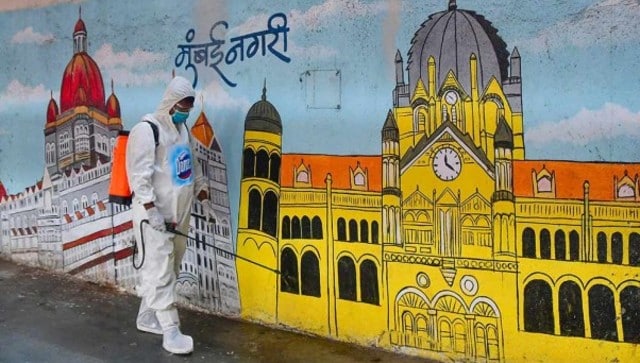COVID-19 update: Maharashtra in the beginning of second wave, prepare for ‘worst-case scenario’, says central team report – India News , Firstpost
The central team which visited the state from 7 to 11 March inferred in its report that the administrative mechanism should be re-instated to the level witnessed in August-September 2020 to contain/suppress COVID-19 transmission

Municipal workers sanitize at platform at Chhatrapati Shivaji Maharaj Terminus in Mumbai. PTI
New Delhi: Maharashtra is at the beginning of the second COVID-19 wave, a central team report has said, highlighting that there is very limited active effort to track, test, isolate cases and quarantine contacts, and there is no adherence to COVID appropriate behaviour among people in rural and urban areas.
wave, a central team report has said, highlighting that there is very limited active effort to track, test, isolate cases and quarantine contacts, and there is no adherence to COVID appropriate behaviour among people in rural and urban areas.
Based on the central team report, Union Health Secretary Rajesh Bhushan has written a letter to the Maharashtra government, stating “measures such as night curfews, weekend lockdowns etc have very limited impact on containing/suppressing the transmission” and urged the state to focus on strict containment strategies, strengthening surveillance and augmenting testing.
In a letter to Maharashtra Chief Secretary Sitaram Kunte, Bhushan said even though the health infrastructure is adequate as of now, the “state should plan for a worst-case scenario with sufficient lead time”.
The central team which visited the state from 7-11 March inferred in its report that the administrative mechanism should be re-instated to the level witnessed in August-September 2020 to contain/suppress COVID transmission.
“ln all the districts visited by the central team, the test positivity rate was high, ranging from 51 percent in Mumbai to 30 percent in Aurangabad, implying that there are lot many cases that are not being tested and there is high transmission in the community,” the report underlined.
ln view of limited contact tracing, a large pool of asymptomatic and pre-symptomatic people among contacts are not tracked and tested, the report said and stressed that testing must be considerably enhanced and protocol laid down by ICMR followed.
“The absence of rigorous tracing, testing and containment is leading to sustained community transmission,” it said. “The case-contact ratio is more than 1:20. Though it appears high, a deep dive into the methodology of contact tracing revealed that the main concept of contact tracing was not clearly understood by field-level staff, who were mainly listing the immediate family and neighbourhood contacts, for the sake of listing.
“The high-risk contacts in workplace settings, social settings and family settings were not investigated and listed,” the report highlighted.
The report stated that the current case fatality was found to be very high among admitted cases in Government Medical College in Aurangabad and in Vasant Rao Pawar Medical College, Nashik which needs to be investigated in detail, including sending samples for whole-genome sequencing, it said.
Referring to the findings of the team, Bhushan said that containment strategy needs to be re-introduced, containment zones must be better defined based on contact listing, digital mapping of cases and contacts and should be much larger to include the area of influence of cases/ contacts.
“The buffer zones need to be delineated. The perimeter control needs to be strictly enforced. For each containment zone, the Rapid Response Teams should develop an operational plan,” he said.
Bhushan also stressed augmenting testing to bring the test positivity rate to less than 5 percent and strengthening surveillance by the active house to house search for active cases/contacts in containment zones (as per the containment plan).
Further, passive surveillance for ILI and SARI must be enhanced through health institutions and involvement of private practitioners.
“The Incident Command under the leadership of district collector and municipal commissioner should be actively re-instated with the whole of government approach to contain/ suppress the transmission. This should be monitored at the highest level,” Bhushan said.
For every positive case, at least 20 to 30 close contacts (including family contacts, social contacts’ workplace contacts and other casual contacts) need to be promptly traced and tracked and the practice of isolating 80-85 percent of active cases kept in home isolation needs to be reviewed, he said in the letter.
“Vaccine hesitancy among frontline workers needs to be addressed as their services would be required if the trajectory follows the upward swing as is being witnessed now. The state should also expedite vaccinating those with co-morbidities and elderly,” Bhushan stated.
Subscribe to Moneycontrol Pro at ₹499 for the first year. Use code PRO499. Limited period offer. *T&C apply

